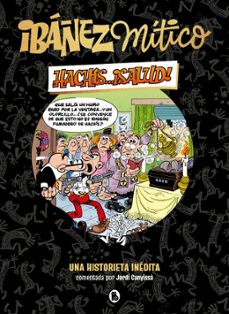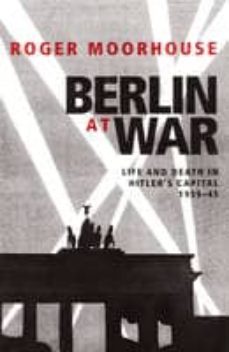Imprescindibles
Más vendidos Libros más leídos eBooks más leídos Todos los libros Todos los libros Autores destacados Series y sagas
Recomendados Libros recomendados Autores destacados Libros que inspiran Vidas con historia LGTBIQ+ English books
Ficción
Literatura Contemporánea Estudios literarios Clásicos Cuentos Poesía Teatro Libros de bolsillo Sagas literarias
Géneros literarios Novela romántica y erótica Novela negra Novela histórica Narrativa fantástica Novela de ciencia ficción Novela de terror Narrativa de humor Narrativa de viajes
No Ficción
Ciencias y tecnología Biología Ciencias Ciencias naturales Divulgación científica Informática Ingeniería Matemáticas Medicina Salud y dietas Formación Idiomas Estilo de vida Libros de Cocina Guías de viaje Narrativa de viajes Deportes Libros de Juegos Manualidades
Humanidades Autoayuda y espiritualidad Ciencias humanas Derecho Economía y Empresa Psicología y Pedagogía Filosofía Sociología Filología Biblioteconomía Estudios filológicos Estudios lingüísticos Estudios literarios Historia y crítica de la Literatura
Infantil
Juvenil
#Jóvenes lectores Narrativa juvenil Clásicos adaptados Libros Wattpad Libros Booktok Libros de influencers Libros de Youtubers Libros Spicy Juveniles Libros LGTBIQ+ Temas sociales Libros ciencia ficción Libros de acción y aventura Cómic y Manga Juvenil Cómic Juvenil Manga Shonen Manga Shojo Autores destacados Jennifer L. Armentrout Eloy Moreno Nerea Llanes Hannah Nicole Maehrer
Libros de fantasía Cozy Fantasy Dark academia Hadas y Fae Romantasy Royal Fantasy Urban Fantasy Vampiros y hombres lobo Otros Misterio y terror Cozy mistery Policiaca Spooky Terror Thriller y suspense Otros
Libros románticos y de amor Dark Romance Clean Romance Cowboy Romance Mafia y amor Romance dramatico Romance dramatico Romcom Sport Romance Otros Clichés Enemies to Lovers Friends to Lovers Hermanastros Slow Burn Fake Dating Triángulo amoroso
Cómic y Manga
Novela gráfica Novela gráfica americana Novela gráfica europea Novela gráfica de otros países Personajes, series y sagas Series y sagas Star Wars Superhéroes Cómics DC Cómics Marvel Cómics otros superhéroes Cómics Valiant
eBooks
Literatura Contemporánea Narrativa fantástica Novela de ciencia ficción Novela de terror Novela histórica Novela negra Novela romántica y erótica Juvenil Más de 13 años Más de 15 años Infantil eBooks infantiles
Humanidades Autoayuda y espiritualidad Ciencias humanas Economía y Empresa Psicología y Pedagogía Filosofía Historia Historia de España Historia Universal Arte Cine Música Historia del arte
Ciencia y tecnología Ciencias naturales Divulgación científica Medicina Salud y dietas Filología Estudios lingüísticos Estudios literarios Historia y crítica de la Literatura Estilo de vida Cocina Guías de viaje Ocio y deportes
Roger Moorhouse
Recibe novedades de ROGER MOORHOUSE directamente en tu email
Filtros
Del 1 al 6 de 6
JONATHAN CAPE (RANDOM) 9780224080712
Berlin was the nerve-centre of Hitler's Germany. It was the backdrop for the most lavish of Nazi ceremonies, the venue for Albert Speer's grandiose plans to forge a new 'world metropolis', and the scene of the final climactic battle to defeat Nazism. Berlin was the stage upon which the rise and fall of the Third Reich was most visibly played out. Yet while our understanding of the Holocaust is well developed, we know little about the wider challenges posed to the German people by living under a dictatorship in wartime, the compromises demanded and the hardships endured. As a result our understanding of everyday life in Nazi Germany is profoundly imbalanced: we know in intimate detail how a minority died under Nazism, but we understand precious little about how the majority lived. In this vivid and important study, Roger Moorhouse seeks to portray the German experience of the Second World War, not through an examination of grand politics, but rather from the viewpoint of the capital's streets and homes - a 'Berlin-eye view' that makes use of published and unpublished memoirs, diaries and interviews. As well as giving a flavour of everyday life in the German capital, "Berlin at War" also raises issues about consent and dissent, morality and authority, which go to the heart of the experience of war and dictatorship. Above all, it charts the violent humbling of a once-proud metropolis - the fear, the cruelty, the petty heroism and the individual tragedy.
Ver más
Tapa dura
CORNERSTONE 9781529923667
The inspirational story of the ordinary people who forged the documents that saved thousands of Jewish lives in World War Two. 'Powerful ... gripping ...inspiring' JONATHAN DIMBLEBYBetween 1940 and 1943, a small group of Polish diplomats and Jewish activists in Switzerland engaged in a wholly remarkable - and until now, almost completely unknown - humanitarian operation. Under the leadership of the Polish Ambassador, Aleksander Lados, they undertook a systematic programme of forging identity documents for Latin American countries, which were then smuggled into German-occupied Europe to save the lives of thousands of Jews facing extermination in the Holocaust. The Lados operation was one of the largest rescue missions of the entire war, and The Forgers tells this extraordinary story for the first time.We follow the desperate bids of Jews to obtain these life-saving documents, and their painful uncertainty over whether they will be granted protection from the Nazis' murderous fury. And we witness the quiet heroism of those who decided to act in an attempt to save thousands of lives.
Ver más
Tapa blanda
HARPERCOLLINS PUB. 9780008644895
A superb work of history JAMES HOLLAND A thrilling account from a master of Second World War history DAN SNOW A landmark history of the U Boat war told through the experiences and recollections of
Ver más
Tapa dura
DEBATE 9788483067543
La historia de los planes para matar a Hitler durante la II Guerra Mundial. El plan Stauffenberg, el atentado contra Hitler preparado por el movimiento de resistencia alemán el 20 de julio de 1944, es muy conocido. Sin embargo, se trata solo de uno mas en una larga serie de intentos similares. Matar a Hitler cuenta el sorprendentemente alto numero de intentos de asesinar a Adolf Hitler. Alemanes, sovieticos, polacos y britanicos, todos concibieron planes para matar al Fuhrer. Pistoleros solitarios, oficiales alemanes desafectos al regimen y la resistencia clandestina polaca, el NKVD sovietico y el SOE britanico fueron participes. Los metodos propuestos iban desde bombas, venenos o francotiradores hasta infiltrar las SS, o incluso mandar a Rudolf Hess de vuelta a Alemania hipnotizado. Muchos de los planes nunca salieron de los comites que los gestaron, algunos se llevaron a cabo. Todos fracasaron. Junto a la dramatica y desconocida historia de los numerosos atentados contra Hitler, este libro presenta una fascinante investigacion sobre varias cuestiones mas amplias, como los complejos motivos de la resistencia alemana, los peculiares escrupulos britanicos y la eficiencia del aparato de seguridad nazi. Basado en memorias y material original de archivo procedente de Polonia, Rusia, Alemania y Gran Bretaña, Matar a Hitler ofrece una vision unica de la historia del Tercer Reich. Los asesinos potenciales de Hitler eran desde simples artesanos a altos oficiales, de los apoliticos a los obsesos ideologicos, y desde agentes del enemigo a sus mas intimos colaboradores. Pocos de estos hombres y mujeres han pasado a la historia, que aqui se cuenta por fin. La historia de sus planes, sus motivos y sus fracasos. Pero tambien es la cronica de la asombrosa supervivencia de un tirano.
Ver más
Tapa dura
Objetiva 9786557821121
A história definitiva do pacto que uniu Hitler e Stálin de 1939 a 1941. Por quase dois anos, os dois ditadores mais implacáveis da história — e tidos como inimigos mortais — foram colaboradores ativo
Ver más
eBook
Del 1 al 6 de 6
































